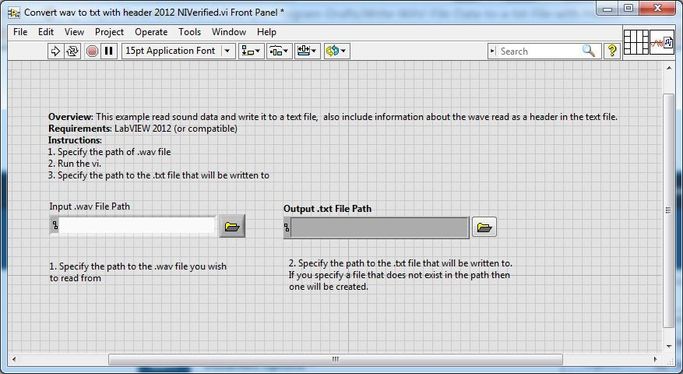Write .WAV File Data to a .txt File with Header Information using LabVIEW
- Subscribe to RSS Feed
- Mark as New
- Mark as Read
- Bookmark
- Subscribe
- Printer Friendly Page
- Report to a Moderator
Products and Environment
This section reflects the products and operating system used to create the example.To download NI software, including the products shown below, visit ni.com/downloads.
- LabVIEW
Software
Code and Documents
Attachment
Overview
Given a valid file path to a .wav file, this code is an example of how to read sound data and write it to a text file. This example will also include information about the wave read as a header in the text file.
Description
The VI operates by first opening the sound file to be read using the specified path. The sound file is read and output as Waveform data. Information about the sound itself is extracted from the .wav file, which is then closed. After that, the Y components of all the Waveform samples are unbundled, and sound information is converted into a string. The final step is to write sound information to the output file specified by the output file path and append the Y component array to the output file.
Steps to Implement or Execute Code
- Enter a valid path to the .wav file you would like to read in the Input .wav File Path section.
- Enter a path to the output text file you would like to write to. If the file does not exist it will be created and if it does exist it will be overwritten.
- Run the example.
Requirements
- LabVIEW 2012 (or compatible)
Additional Information or References
Front panel
VI snippet
**This document has been updated to meet the current required format for the NI Code Exchange.**
Product Marketer
Example code from the Example Code Exchange in the NI Community is licensed with the MIT license.
- Mark as Read
- Mark as New
- Bookmark
- Permalink
- Report to a Moderator
thanks for the info.is there any way to remove header information from a file and then save it as text
Freelance LabVIEW and Arduino programmer.
For projects contact me ; djac791@gmail.com


